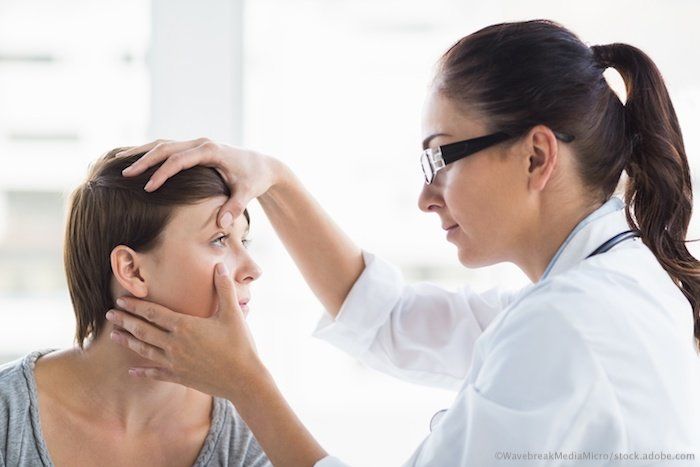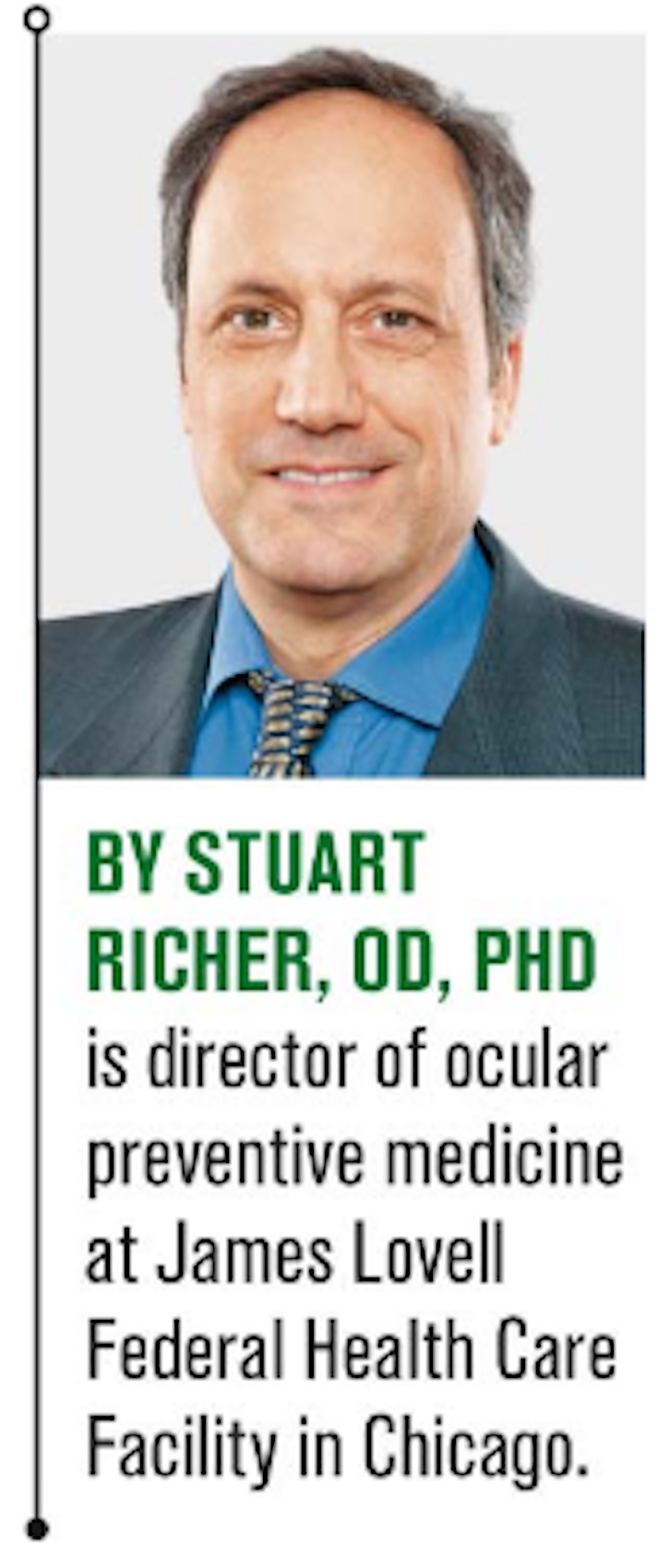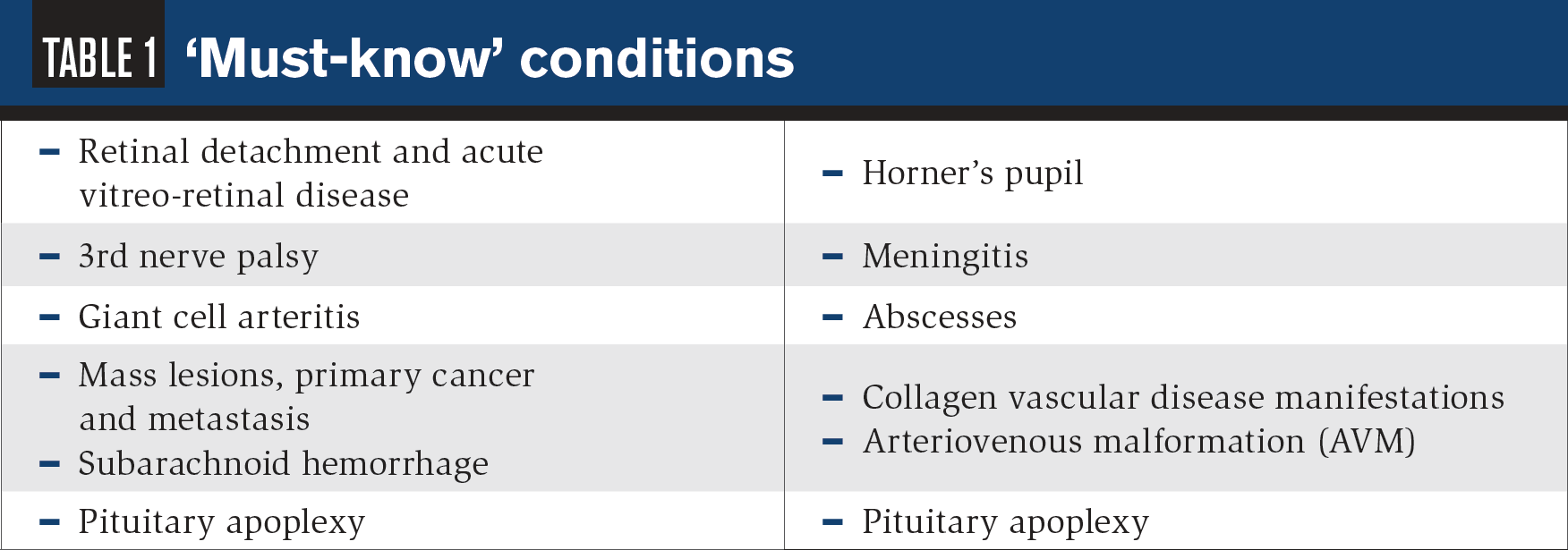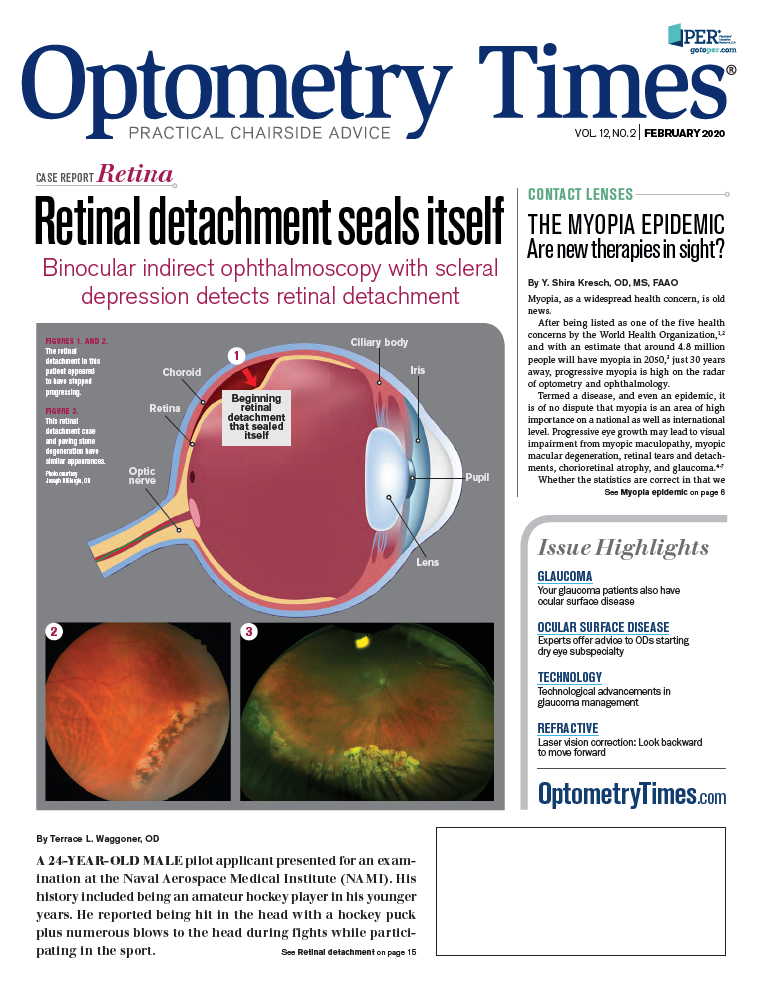Prevention, artificial intelligence, and the future of optometry
Optometry’s success in the future will depend on the ability of ODs to overcome new challenges.


Table 1: Must-know conditions


The question of how to maintain quality healthcare standards while forging ahead into new discoveries and developments is baffling to many clinicians. Optometry’s success in the coming years will depend on the ability of ODs to overcome challenges like economic competitiveness and utilize and grow alongside technological advances that are changing the way business is conducted, like artificial intelligence. Diving into the approximately 5,500 publications of peer reviewed materials exchanged on the National Library of Medicine every day is a great place to start if ODs can come up with the energy and time expenditures to do so. AI is here to help.
Optometry’s success in the coming years will depend on the ability of optometrists to overcome challenges like economic competitiveness and utilize and grow alongside technological advances that are changing the way business is conducted.
There are now 20 million medical publications, freely accessible as abstracts and full publications within the National Library of Medicine (NLM). Some two million publications are added each year for clinicians to reference in examination rooms, at home, or anywhere they’d like on smart devices. NLM sends more than 10 terabytes of data to nearly five million users and receives more than 100 terabytes of data, representing approximately 5,500 publications of exchanged, peer reviewed, reading material every day.1
Related: How artificial intelligence is changing the future of optometry
There is incredible research waiting to be discovered and applied within this data, and few ODs rolling their sleeves up to unearth it.
The reasons why? Stressful modern practice demands, educational debt, and competing family priorities lead to physician burnout.
Practice demands, physician burnout
In 1975, an average physician visit was 60 minutes long, and a follow-up visit was 30. Today, an average office visit is 12 minutes long, and return visits are seven.1
Modern healthcare specifically demands the treatment of increasingly diverse and aging populations, which creates the “perfect storm” for physician burnout, especially when it comes to primary-care doctors and their associated teams of practitioners.
The question of how to maintain quality healthcare standards while forging ahead into new discoveries and developments is baffling.
Related: Nutrition in the future of primary-care optometry
With so much ground to cover in the areas of environmental medicine, public health, exercise physiology, nutritional medicine, epigenetics, geriatric medicine, anti-aging medicine and neuroscience, ODs may start to wonder:
– Will insurance pay for my research?
– Will pharmaceutical companies embrace new discoveries?
– Will governments support efforts if it means fewer customers and jobs?
Related: Innovative mobile technology targets low vision
In his book Deep Medicine, Eric Topol, MD, presents this idea: the physician of today is living in a world of insufficient presence, insufficient time, insufficient data, and “shallow medicine.”2
In his classic book, The Biology of Belief, neuroscientist Bruce H. Lipton, PhD, claims that one third of all healing is due to patient belief, not drug or nutrient chemistry.3
Whether you subscribe to this belief or not, all practicing clinicians should realize that there is no substitute for face-to-face time with our patients, regardless of the increasing prevalence of AI.
Missed opportunities
The US has world-class health care for individual segments of medicine such as emergency medicine, neurosurgery and, indeed, ophthalmology with all of its sub-specializations.
Related: Artificial intelligence might be the future of practice management
However, five iterations of universal United States Department of Agriculture (USDA) dietary recommendations have failed to take into account the tide of cellular insulin insensitivity, non-alcoholic fatty liver disease, and the growing diabetes epidemic that currently plagues our most vulnerable citizens.4,5
According to the Centers for Disease Control, more than 100 million U.S. adults are living with diabetes or prediabetes.6 Our own experience as patients and optometric physicians suggest a broken “disease management system,” inconsistent with scientific data available through NLM. We know that genetics plays a role in chronic disease such as age-related macular degeneration (AMD), but the story does not end there, even if the way we tell it does. Epigenetics plays a much larger role.7
Related: AI may be the answer for early disease detection
Furthermore, there is no single magic diagnostic test, pharmaceutical, or nutrient for progressive retinopathy/choroidopathy. Lifestyle, which encompasses a broad range of ancient nutrients and minimization or modulation of modern stressors, is the task at hand as exemplified by my own life’s work and more recently by ophthalmologist Chris Knobbe, MD.8-10
Perspectives of residency educator
My challenge as a residency coordinator is to cover the medically essential information first, then the chronic ocular disease aspect of the teaching program. That is, I must emphasize to new optometrists their responsibilities to detect, diagnose, and manage (i.e., appropriately refer) life- and vision-threatening diseases.
The most prevalent challenges include an aging population and the resulting high clinical traffic in medical emergencies, chronic oculo-vascular disease, and eye cancers. All contemporary optometric institutions embrace this approach. This is no small task for even seasoned practitioners. Several “must know” conditions for residents are listed in Table 1.
Related: Year in review of optometric advancements
Problems and opportunities
Employment of ODs is projected to grow 10 percent from 2018 to 2028, faster than the average for all occupations.11 Science in all medical disciplines has revealed that patients and their physicians must begin treatments early to prevent cell loss. Nutritional supplements play a role earlier, while pharmaceutical drugs are best used later.9,10
Related: AI testing is almost here, and it doesn’t care if ODs are ready
Is it not time to move independently of ophthalmology in providing preventative eye care? All primary-care medicines are facing the same realities.
It is not a matter of science in 2020, but the adoption of bold new strategies that will best shape the future. AI can make health care human again, allowing optometrists to embrace our rooted tradition of face-to-face encounters as we get on with the business of preserving vision.
The soon-to-be-released feature-length documentary, “Open Your Eyes” delivers the resounding message that the eye holds the secrets to health. It explores how America became so sick and how optometrists can now see almost 300 diseases in the eye.
Kerry Gelb, OD, travels throughout North America and Europe and explores in contrast the Centenarians in Costa Rica, who for the most part have no disease and live beyond 100 years without the major cause of blindness seen in the US. Interviews with medical experts, PhDs, researchers, and journalists convey the emerging importance of eye doctors, how they have a major impact on disease prevention, and why they should stand at the forefront of health and wellness.
More by Dr. Richer: Go beyond fish oil with astaxanthin in krill oil
References:
1. Topol E. Deep Medicine. 1st Edition. Hatchett Books, New York, NY. 2019.
2. Lipton BH. The Biology of Belief, Unleashing the Power of Consciousness, Matter and Miracles. 10th Edition. Hay House, Inc. Carlsbad, CA. 2016.
3. Lustig, R. Video: Sugar the Bitter Truth, https://youtu.be/ dBnniua6-oM. Accessed 1/29/20.
4. Lustig, R. Sugar the Bitter Truth. Plume, Penguin Group. New York, NY. 2014.
5. Richer S. Is there a prevention and treatment strategy for age related macular degeneration? J Am Optom Assoc. 1993;64(12):838-50.
6. Centers for Disease Control. National Diabetes Statistics Report, 2017. Available at: https://www.cdc.gov/diabetes/ pdfs/data/statistics/national-diabetes-statistics-report.pdf. Accessed 1/29/30.
7. Richer S, Gelb K, Jaffe R. Windows into Wellness: Eight Biomarkers You Should Know. Rev Optom. 2018 Sept 15, 2018, pages 30-33..
8. Knobbe C. Ancestral Dietary Strategy to Prevent and Treat Macular Degeneration. 1st edition. Cure AMD Foundation. Boulder, CO. 2016.
9. Richer S, Poteet J, Ruskin D, Summerton S, Hitchmoth D. Wellness Essentials for Clinical Practice, 2nd Edition. Suppl Rev Optom. 15 October 2018.
10. Richer S, Poteet J, Ruskin D, Summerton S, Hitchmoth D. Wellness Essentials for Clinical Practice. 3nd Edition. Suppl Rev Optom. 15 October 2019.
11. Bureau of Labor Statistics. Occupational Outlook Handbook: Optometrists. Available at: https://www.bls.gov/ ooh/healthcare/optometrists.htm. Accessed 1/29/20.
12. Chester W, Engfehr K, Gelb, K. Open your Eyes. https:// www.imdb.com/title/tt11487298/?ref_=nm_knf_i2. Accessed 1/29/20.

Newsletter
Want more insights like this? Subscribe to Optometry Times and get clinical pearls and practice tips delivered straight to your inbox.